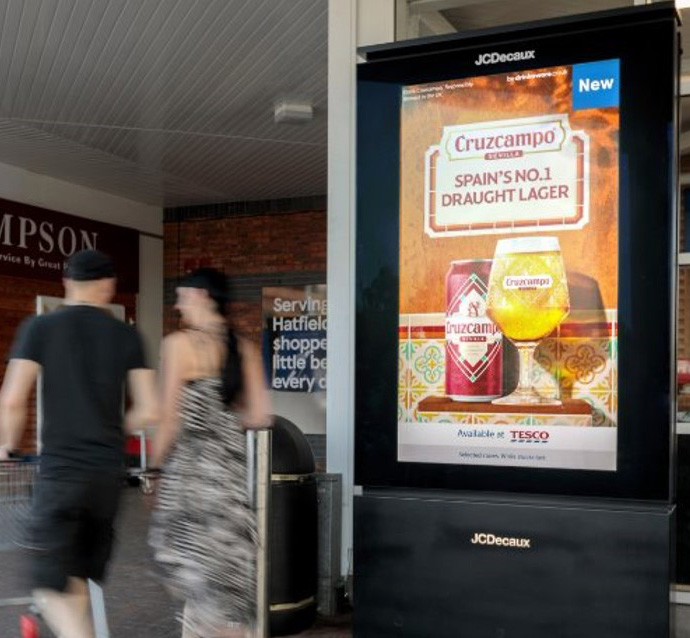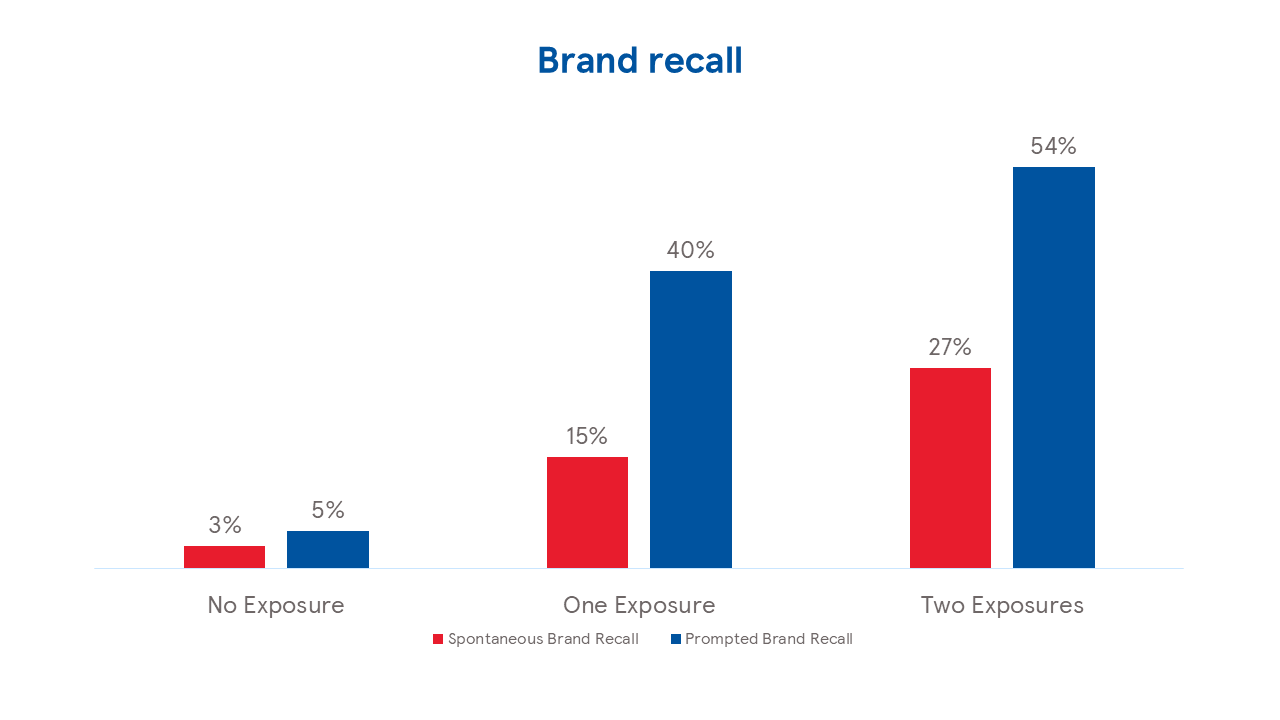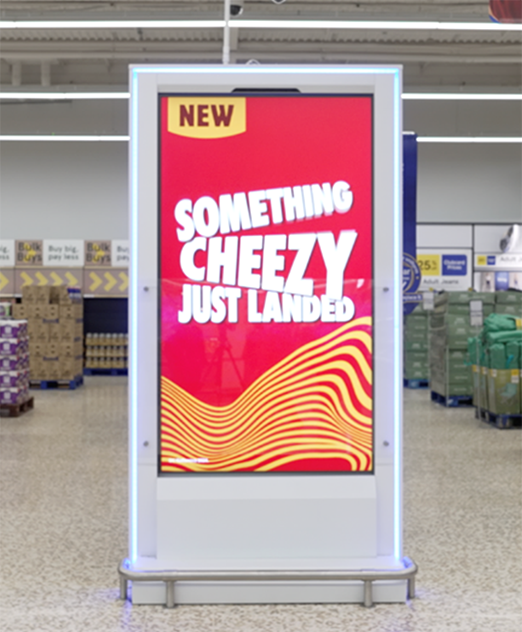- Tesco Resources
- Blog | The attention multiplier: why two screens are better than one to supercharge shopper engagement
Blog.
The attention multiplier: why two screens are better than one to supercharge shopper engagement
Over the past few years there’s been a surge of evidence-based research reshaping how marketers approach brand building. From Dr. Grace Kite’s insights on “the lots of little routes to modern brand building” to Tom Roach’s call for big advertising to think small, one thing is clear: the power of multiple, small exposures across various channels is growing stronger.
One of the most powerful things about retail media is the variety of channels available and how advertisers can engage with customers across their journey from sofa to store. Whether you are looking to raise awareness, drive consideration, prompt a purchase, or build customer loyalty, there is a range of ways for brands to achieve various goals effectively. Retail media should be considered as an ecosystem that drives the total plan. Not an activation line on the plan. It offers brands quality trusted reach and the opportunity to deliver creative consistency, yet adapted to the precise format the customer is seeing, and the mindset they are seeing it in.
Let's look specifically at our Digital Out of Home (DOOH) SmartScreens, a network of 72-inch portrait-style displays strategically placed in over 500 Tesco Extra and Superstores in partnership with JCDecaux. These screens are undeniably eye-catching, reaching an audience of more than 6 million shoppers every fortnight with 5 to 10-second bursts of static or dynamic branded content. Positioned right at the entrance, they serve as a powerful way to prime shoppers as they enter the store.

The effectiveness of DOOH has long been recognized. As early as 2015, research revealed that 71% of people felt DOOH ads were more attention-grabbing than online ads1. More recently, a study found that dynamic DOOH content led to a 16% uplift in sales, further proving its impact on driving consumer behaviour2.
More screens, better results
Things have moved on since those studies were conducted, of course, DOOH is far more prevalent than it was a decade ago, and it’s not uncommon for brands to have access to multiple screens/formats at a single location. Tesco has rolled out over 5,000 in-store screens at key positions throughout the store that deliver eye-catching, inspirational, dynamic content that helps to build brand and drive sales. With our expanded DOOH screen network in mind—and keen to understand what difference it might make when shoppers are exposed to two or more screens in a single trip—we recently partnered with JCDecaux on a research initiative of our own.

SmartScreens — situated at the front of the store and a customers first experience with a brand

Connected Displays — in-aisle screens close to the point of purchase
Conducted by Lumen—an independent attention technology company—the study employed industry-leading predictive eye-tracking technology. Study participants were shown a “simulated grocery shopping experience”, essentially an interactive, first-person perspective walkthrough of a Tesco store.
The content featured in those simulations varied. Some participants were shown digital screens at the store entrance and in-aisle. Others saw screens solely at the entrance. Some saw none whatsoever. Regardless of which variation they were shown, participants were then questioned on what they had noticed during their walkthrough. Here’s what we learned:
- When two or more screens were featured in the simulation, audience “reach” increased to 87%. That compares to 79% for campaigns using only a single screen.
- “Dwell time” doubled, rising from 2.1 seconds for one screen to 4.2 seconds for two screens.
- Spontaneous brand recall increased by more than 3.5x — from 8% amongst participants exposed to one external screen, to 29% for those exposed to two.
- Prompted brand recall rose from 40% to 54%.
- And brand consideration increased to 33% for participants exposed to two screens, up from 28% for those only exposed to one. For those who saw no screens, this figure sat at 19%.

What’s immediately clear here is that the presence of even one additional screen at a store has a major impact on shopper behaviours. In an effect that we’ve come to call the “attention multiplier”, two screens reach more shoppers, attract significantly more attention, and have a similarly positive impact on brand recall. And, unsurprisingly, that has big implications for how brands should plan their DOOH campaigns.
Full-funnel impact
One thing that comes across clearly in these results is that brands need to use a combination of screens to tap into the attention multiplier. For example, a store that has front-of-store and in-aisle screen formats brands shouldn’t be thinking either/or – they should be using both at once benefiting from the reach and boost of awareness that out-of-home is famous for and continuing the conversation with shoppers as they move through the store.
While the temptation might be to divert spend from one screen to another, the smart choice here—as demonstrated by the numbers above—is to use both screens in tandem. By doing so, advertisers can achieve a genuine advantage over competing brands.
Vitally, this isn’t just about awareness, either. The attention multiplier has an impact across the entirety of the marketing funnel. Yes, spontaneous and prompted recall increases when shoppers see an ad on two or more screens, but so too does dwell time. And, as we’ve seen in other studies, increased dwell time typically leads to increased sales as well3.
Does this mean that brands should only be looking to advertise on two screens at once? Absolutely not. As noted above, a single screen campaign can still deliver fantastic results. For those that want to take their campaigns to the next level, though, doubling up on their digital presence is clearly the way forward - every little touchpoint helps.
A major expansion is underway to bring even more in-aisle screens to hundreds of locations nationwide—building on the 5,000+ screens already installed across more than 2,500 stores. This growth will give brands a larger, more dynamic creative canvas, allowing for richer brand expression and a powerful opportunity to connect above-the-line campaigns directly to the store.
Interested in boosting the performance of your own DOOH campaigns? Contact your media planner or agency lead for more information.

1 The State of OOH Advertising in 2015 – Out of Home Advertising Association of America
2 “Landmark” UK Research Suggests That For DOOH, The Right Message, Place, Moment Thing Really Does Work – Sixteen:Nine, 2nd April 2020
3 Retail Dwell Time: the Route to Higher Spending – Retail Sensing, 7th May 2024

